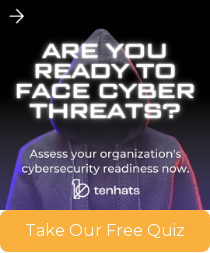Whitelists are an essential element in fortifying cybersecurity defenses. They act as proactive barriers, permitting only authorized users and activities while blocking potential threats. But there’s more to them than simply acting as a gatekeeper. You need to know how they fit into your overall business strategy.
A whitelist is a tool that allows entry to trusted users while blocking or restricting others. It bolsters cybersecurity defenses by preventing unauthorized access, mitigating insider threats, and enhancing malware defense.
Strategic implementation involves tailoring access controls, regular reviews, and partnering with experts for effective management and implementation.
What Is a Whitelist?
Whitelists are cybersecurity mechanisms that define a list of trusted entities, such as:
- Users
- Programs
- IP addresses
Also known as an allowlist, a whitelist essentially functions as a filter, allowing only pre-approved items through. Whitelists are a proactive approach to cybersecurity by explicitly specifying what is allowed. This is especially in contrast to blacklists, which catalog and block unauthorized or malicious entities.
For instance, if you block a caller on your phone, that’s a blacklist. Nothing prevents them from just calling again from a different number. A whitelist would make it so that only your friends and family are allowed to call. All other numbers would be blocked.
In business, examples of whitelisted entities can include:
- Trusted email addresses
- Authorized applications
- Permitted websites
With whitelists, your organization can enhance its security posture, ensuring that only approved entities can interact with sensitive systems or data.
Whitelisting is commonly utilized in various contexts, such as:
- Network security
- Email filtering
- Application control
This helps to mitigate risks associated with unauthorized access or malicious activities.
Despite their benefits, one 2021 report found that only 32% of organizations have implemented whitelists as part of their cybersecurity. This is surprising considering that 62% of respondents to the same report said they expected a financially motivated attack to occur within the next 12 months.
The Business Applications of Whitelists
Whitelists play a crucial role in various business applications, primarily in the realms of:
- Access control
- Protecting sensitive information
- Enhancing network security
In access control, whitelists manage and restrict user permissions. Cataloging authorized entities, such as employees or devices, ensures that only approved individuals gain access to specific systems or resources in your database. This helps to safeguard critical data while also mitigating the risk of unauthorized access and potential breaches.
In the context of protecting sensitive information, whitelists act as a proactive defense mechanism. They do this by specifying approved:
- Applications
- Processes
- Users
Your business can create barriers that prevent unauthorized software or personnel from interacting with sensitive data. This is particularly crucial in industries where confidentiality is paramount, such as healthcare or finance.
Whitelists also contribute significantly to enhancing network security. By allowing only trusted programs or entities to operate within a network, your business can reduce its attack surface and limit the potential entry points for malicious actors.
This proactive approach helps in:
- Preventing malware infections
- Reducing the likelihood of data breaches
- Fortifying the overall resilience of the business’s digital infrastructure
Whitelists are instrumental in promoting a secure and controlled computing environment for your businesses. They help safeguard both your operational integrity and sensitive information.
Allowlists and Cybersecurity
A whitelist plays a crucial role in bolstering cybersecurity defenses by focusing on three key aspects:
- Preventing unauthorized access
- Mitigating insider threats
- Enhancing malware defense
Whitelists help prevent unauthorized access by specifying a list of approved entities, applications, or devices that are permitted access to your system or network. This approach ensures that only known and trusted elements can interact with sensitive data or critical infrastructure, reducing the risk of unauthorized intrusion.
They’re also instrumental in mitigating insider threats. They do this by restricting access privileges to the bare minimum required for job functions. This limits the potential damage caused by insiders with malicious intent as only necessary actions are permitted. Any unauthorized activities are automatically flagged for investigation.
Whitelists enhance malware defense by explicitly defining legitimate programs and processes that are allowed to run. This helps prevent the execution of unauthorized or malicious software. The result is a significantly reduced attack surface, minimizing the chances of malware infiltration and enhancing the overall security posture of a system or network.
Challenges and Considerations
Whitelists aren’t without their challenges. For instance, they pose problems for striking a balance between security and convenience. Maintaining a comprehensive yet usable list requires constant updates, as overlooking entries may compromise security. Striking the right balance is crucial to prevent obstructing legitimate activities, and ensuring smooth operations.
On the other hand, excessive restriction risks:
- False negatives
- Blocking valid entities
- Causing disruptions
The challenge lies in fine-tuning whitelists to preemptively accommodate the evolving needs of your organization while guarding against potential pitfalls associated with overly restrictive measures. Regular assessments and adaptability are vital to optimize whitelist effectiveness without sacrificing user convenience or system functionality.
Strategic Implementation in Business
Strategic implementation of whitelists in your business involves tailoring access controls to specific needs. This ensures a customized and secure environment for your organization’s data.
Regular reviews and updates are crucial to maintain effectiveness. Periodic assessments allow for adjustments in response to evolving threats, ensuring ongoing protection against potential vulnerabilities.
Customization and continuous evaluation of whitelists are essential components of a proactive and adaptable security strategy. It helps create a more dynamic and secure landscape for your business operations.
Partnering with TenHats
TenHats is a cutting-edge IT managed services provider that excels in facilitating strategic cybersecurity implementation, including whitelists. We can empower your organizations to meticulously curate authorized entities, ensuring airtight security and streamlined operations.
We can also help you achieve seamless integration of whitelists across various departments, granting precise control over access privileges. We simplify whitelist management, enabling swift adjustments to accommodate your evolving business needs.
At Tenhats, we provide invaluable insights into whitelist effectiveness. Our strategic business solutions and data center make us an indispensable partner for businesses seeking to fortify their digital perimeters and enhance strategic decision-making through the astute implementation of whitelists.
Does your company need to up its cybersecurity game? Contact us today to start a conversation!
Whitelists identify trusted entities, allowing them access while blocking or restricting others. They strengthen your cybersecurity defenses by preventing unauthorized access, addressing insider threats, and improving malware defense. Nevertheless, whitelists do pose challenges. Successful implementation requires customized access controls, periodic reviews, and collaboration with specialists like TenHats for efficient management and execution.
In 2016, TenHats built the region’s first purpose-built colocation data center in over 20 years. Located in Knoxville, TN, our data center can serve any organization in East Tennessee and beyond. With our team’s IT experience, we provide a lot more than simply protected data. When you call us, you talk to a real IT expert. Connect with our team about our data center today!

